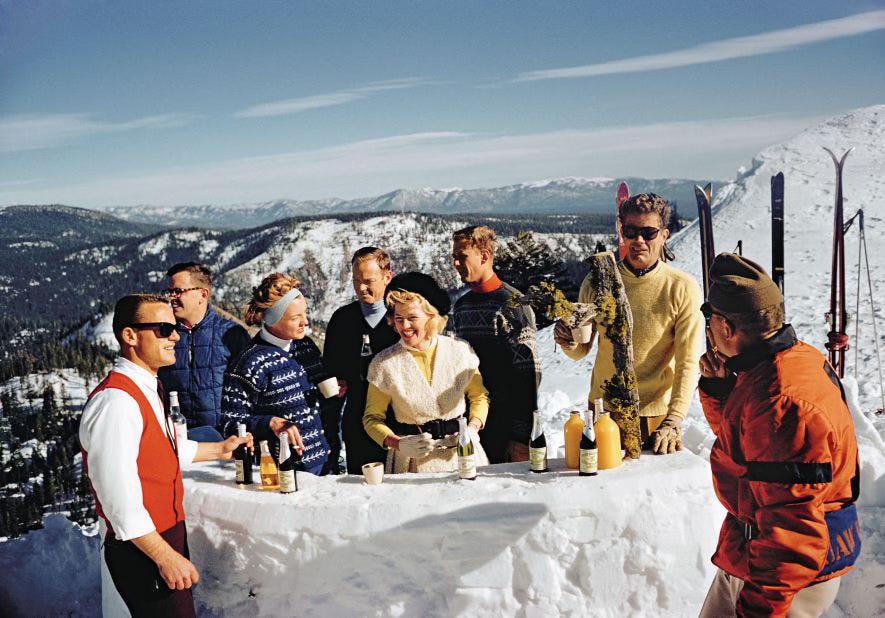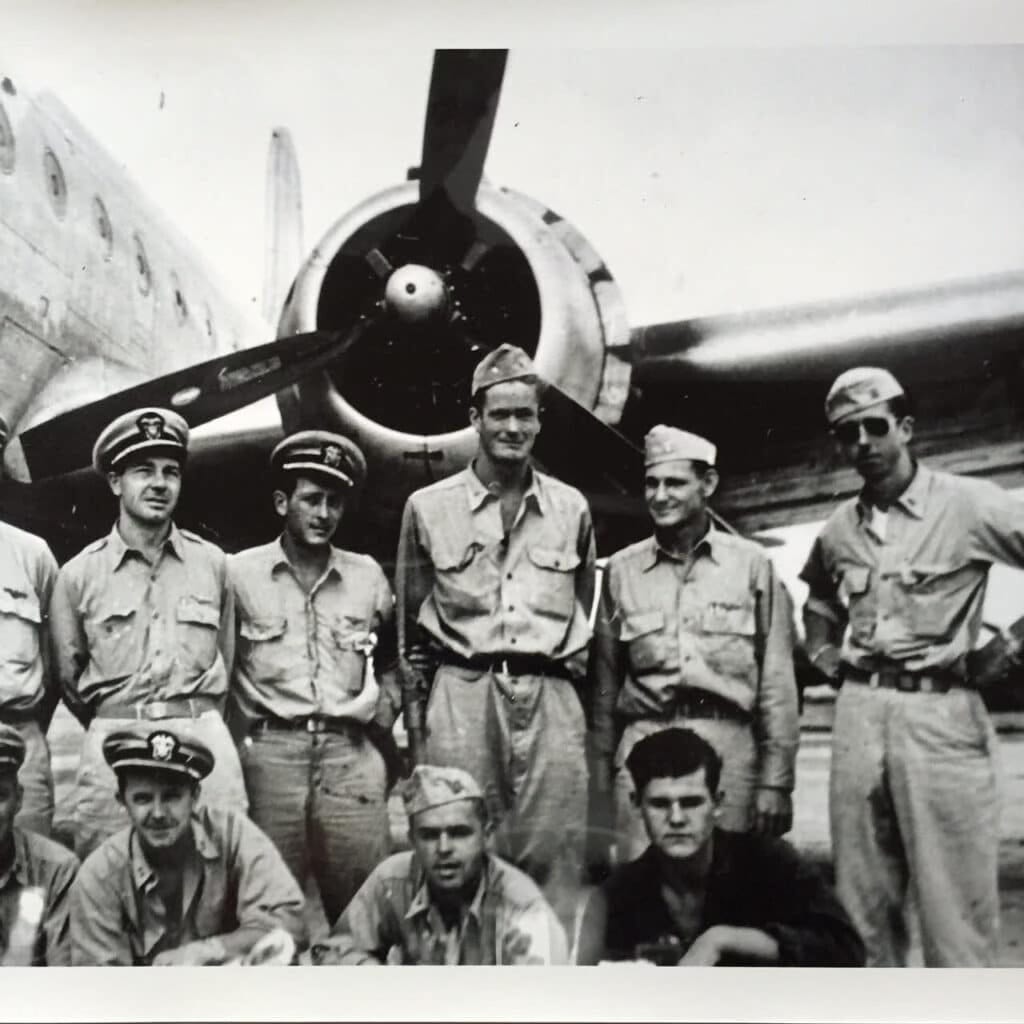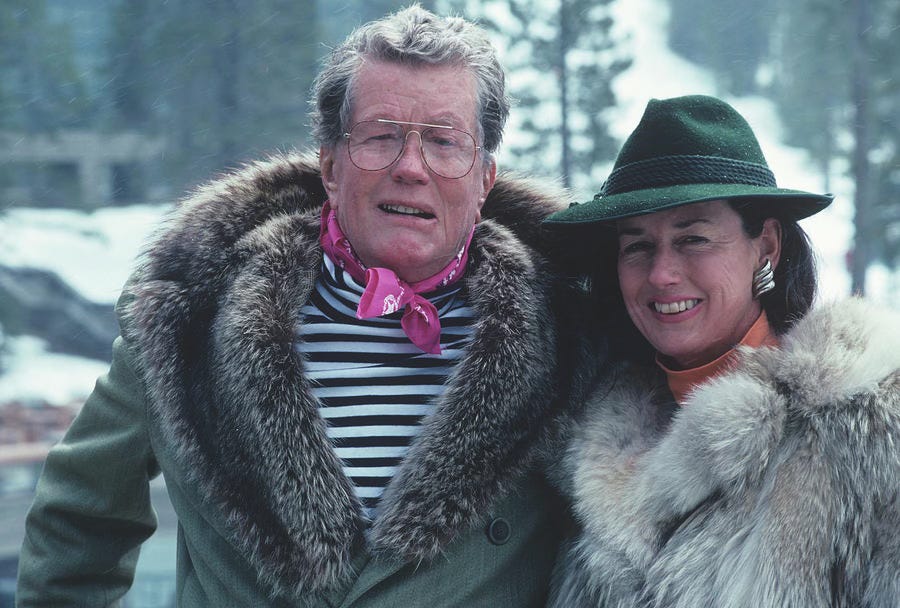“Very few people are able to do against the odds the things he was able to do. He put Squaw Valley on the map and made it into one of the great ski resorts in the world.”
— Judge Bill Newsom, 1995

Born in 1913 and educated at Harvard, Alexander Cochrane Cushing’s early experiences in the outdoors shaped his passion for skiing. His determination to transform Squaw Valley into a premier ski destination culminated in successfully hosting the 1960 Winter Olympics, a feat that brought international recognition to the area.
Table of Contents: Early Life / Education / Military Service During WWII / Founding Squaw Valley Ski Resort / Winter Olympics / Squaw Valley Ski Resort today: Palisades Tahoe / Current Features / Personal Life /
If you aren’t subscribed yet, hit the subscribe button below to receive the Adorable Stories every weekend, directly in your inbox:
Early Life
Alexander Cochrane Cushing was born on November 28th, 1913, in Manhattan.
His father, Howard Gardiner Cushing (1869–1916), was an artist and died when Alexander was only three years old.
His mother, Ethel (née Cochrane) Cushing (1882–1948), was a dedicated homemaker who dealt with poor health all her life.
“When I was 8, I remember my mother telling me I would have to find my own way in the world,” Alexander said in an interview with the Harvard Law Bulletin in 2003. “That stuck with me.”
Education
Due to the early death of his father when Alexander was just a child and his mother’s ongoing health issues, he spent much of his young life away from home at boarding school.
Alexander attended the prestigious Groton School. After graduating from Groton, he went on to Harvard University, where he earned his undergraduate degree in 1946. Following his undergraduate studies, he continued at Harvard Law School, graduating in 1939.
Holidays found him in the center of high society in Newport and Manhattan, and he became known as a graceful tennis player and an escort of debutantes. As a youth in Newport, he was skilful enough at bridge to play imaginary hands without cards with Harold S. Vanderbilt, the inventor of contract bridge.
After graduating from law school, Alexander worked for three years at the U.S. State Department, thanks to a recommendation from his Groton classmate, the political analyst Stewart Alsop.
He later briefly joined the Department of Justice in Washington, D.C., where he even argued a case before the United States Supreme Court.
After leaving public service, he took a position at the New York white shoe law firm Davis Polk, where he gained valuable experience in legal practice.
Military Service During WWII
Before embarking on his business career, Alexander served in the U.S. Navy during World War II: he was posted in various battlefronts in South America and the Pacific for five years, and he eventually retired as a Lieutenant Commander upon the end of the War.

Founding Squaw Valley Ski Resort
In 1949, while holidaying in Sierra Nevada, Alexander Cushing recognized the potential of the pristine Squaw Valley area for skiing. He was captivated by its breathtaking scenery and favorable climate.
He recognized the area’s potential as a ski resort and joined forces with Wayne Poulsen, a Pan Am pilot and former champion skier who had acquired 640 acres of the valley’s land from Union Pacific Railroad in the 1940s.
Poulsen was the one who initially introduced Alexander to the valley: their initial vision was to transform Squaw Valley to create a ski resort that would attract winter sports enthusiasts from around the world.
In 1949, Alexander invested USD 145,000 of his personal funds, along with USD 275,000 from Laurance Rockefeller and other investors, to officially establish the Squaw Valley Ski Resort.

Winter Olympics
Beginning in 1954, Alexander embarked on a lobbying campaign to persuade the International Olympic Committee to choose Squaw Valley as the host for the eighth Winter Olympics.
He understood that securing this prestigious event would not only elevate the profile of his resort but also establish it as a premier destination for winter sports on a global scale.
At the time, Alexander faced significant competition from established locations like St. Moritz, Switzerland, and Innsbruck, Austria, both of which had a rich history of hosting Olympic events and were considered favorites compared to Squaw to win the bid.
To bolster his bid, Alexander Cushing showcased the unique features of Squaw Valley, emphasizing its stunning natural beauty, ideal skiing conditions, and the modern facilities he had developed in just a few years since the establishment of the resort.
Ultimately, his hard work paid off when he won the bid, and Squaw Valley hosted the 1960 Winter Olympics (only eleven years after the establishment of the resort), making it the first time the Winter Games were held in the United States since their inception.
His successful campaign not only brought international attention to the resort but also marked a significant milestone in his career: in recognition of his achievements, Cushing was featured on the cover of Time magazine in 1959, highlighting his pivotal role in bringing the Olympics to Squaw Valley.
The spotlight of the 1960 Olympics raised the resort’s profile, and it later went through several ownership changes beginning in the 1970s.
In 1999, Alexander Cushing was inducted into the Ski Industry Hall of Fame for his lifetime contribution to the sport.
In 2012, Squaw Valley merged with nearby Alpine Meadows, and became Squaw Valley Alpine Meadows, to offer joint access to 6,000 acres, 43 lifts, and over 270 runs.
Squaw Valley Ski Resort today: Palisades Tahoe
In 2021, the resort announced a significant rebranding, changing its name from Squaw Valley to Palisades Tahoe.
To this day, Palisades Tahoe continues to be a popular destination for winter sports enthusiasts. The resort has undergone significant improvements and expansions over the years, enhancing its appeal.
The resort attracts approximately 600,000 skiers a year.
Current Features
Skiing and Snowboarding: Palisades Tahoe offers a wide variety of terrain, catering to all skill levels. With over 6,000 acres of skiable terrain, it remains one of the largest ski resorts in the United States.
Modern Facilities: The resort has invested in state-of-the-art lifts and facilities, employing 23 chairlifts, four carpet lifts, a tramway, a gondola connecting it to Alpine Meadows, and the only funitel in the United States.
Summer Activities: Beyond winter sports, Palisades Tahoe also offers summer activities like mountain biking, hiking, and events, making it a year-round destination.
Sustainability Efforts: Recent initiatives focus on sustainability and environmental stewardship, aligning with modern outdoor recreation trends.
Overall, Palisades Tahoe remains a highly regarded destination for skiing and outdoor activities, continuing Alexander Cushing’s legacy in winter sports.
Personal Life
Alexander Cushing was married three times:
His first wife was Justine Bayard Cutting (1918–2003). Time magazine in 1959 reported her comment when Alexander Cushing asked her if she would like to move to the mountains: “Are you out of your mind, Cushing?” she asked. They remained married for 27 years (happily living in the mountains and attending the development of Squaw Valley for most of these three decades), and had three daughters together: Justine Bayard Cushing, Lily Cushing and Alexandra Olivia Cochrane Cushing.
His second marriage was to Elizabeth Ogden (née Woodward) Pratt: she died in 1985.
In 1985, while she was providing legal counsel regarding development land issues at the base of Squaw Valley, Alexander met his third and final wife, Nancy R. Wendt. They married in 1987.

Alexander Cochrane Cushing died of pneumonia on August 19th, 2006 at his family home in Newport, R.I. He was 92 years old and remained chairman of the Squaw Valley Ski Resort until his death.
—Alberto @
Do you know anyone who would love to read this Adorable Story? Show your support by sharing Adorable Times’ Newsletter and earn rewards for your referrals.







